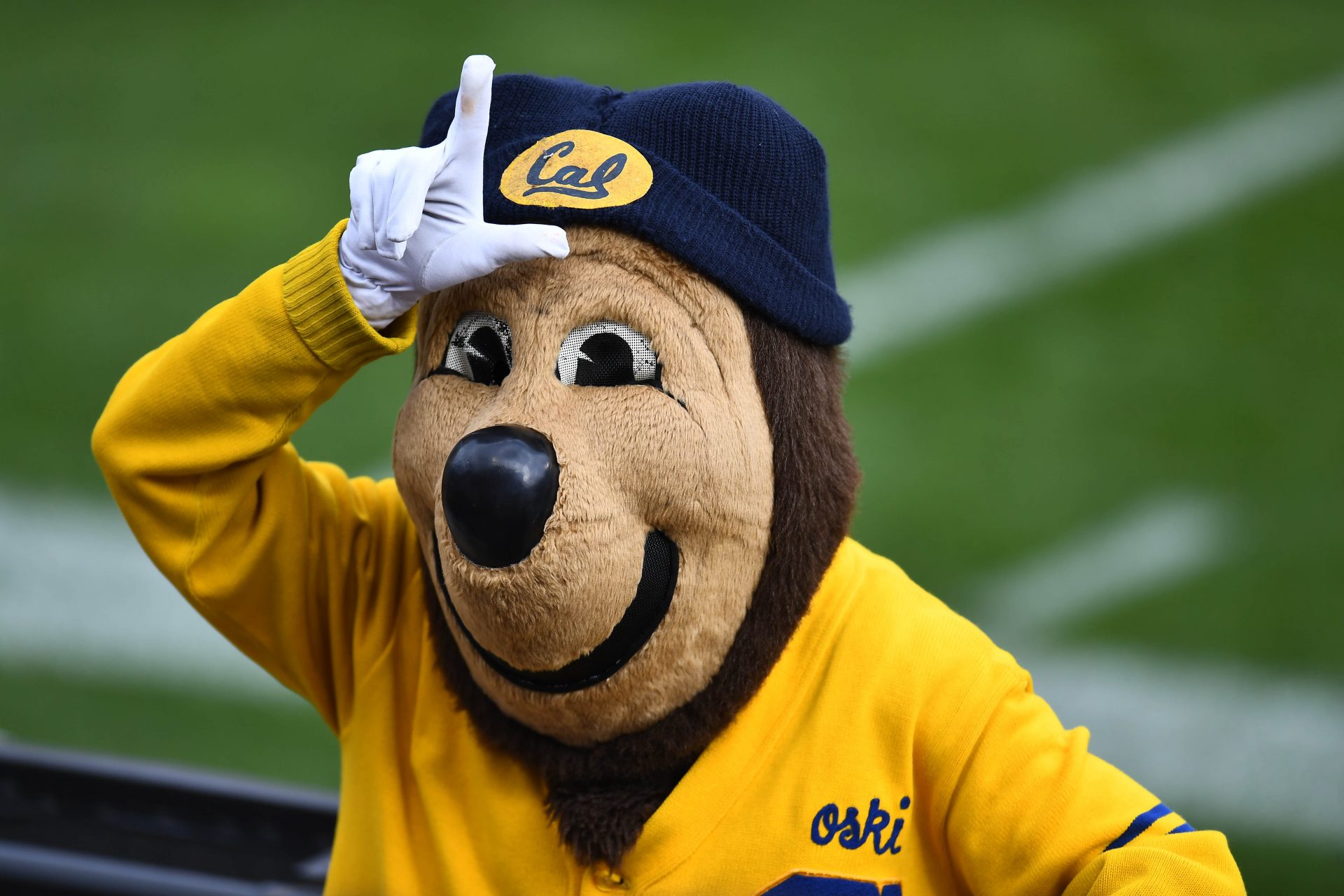College football is unique for several reasons, chief among them is the pageantry and pride shown for programs by alumni and fans alike. No amount of pageantry would be complete without the role of mascots.
There are over 134 different teams in the FBS, with as many varied and different backgrounds as there are teams. Uniquely, the University of California, Berkley is the only school to use the Golden Bear moniker despite nine other programs using some iteration of the “Bear” mascot at the Division I level. How did the mascot come to be, and in what ways does history help tell the story that the Golden Bear now represents? Let’s take a look at that history.

Who (or What) Is the California Golden Bears’ Mascot?
The history of the Golden Bear mascot starts with the university’s founding in 1868. It was named after the Irish philosopher George Berkeley and was the state of California’s first land-grant university in addition to being the founding campus of the University of California system.
The bear’s origin as a mascot did not evolve until several years later but has been the school’s identity for over 125 years, evolving from a symbol to a live mascot and now the present-day costume version.
The bear became associated with the school in 1895 as part of the adoption of blue and gold as the school colors. The story goes that blue represented California’s sky and gold represented the Golden State and the golden poppy flowers found there.
During a track meet between Cal and Stanford, a blue banner with a golden grizzly bear was flown, after which the athletes won several meets by drawing some kind of mythical power from the bear, and thus began the era of the bear representing the school. It is particularly fitting given that the state flag features a native grizzly bear as well.
The adoption of the bear led to the symbol being represented at games and events until the 1930s when a live bear cub began to be used by the school, as has been the case with multiple animalistic mascots at universities nationwide.
MORE: Simulate the College Football Season with CFN’s College Football Playoff Predictor
The first cub was named Bug and made his debut in 1930. Several others followed, including Brownie, Windy, and Smokey. Cubs would be brought to football games and other events and were led by student handlers on a leash.
Putting aside the popularity with fans that having a live bear mascot brought, numerous challenges arose, including the difficulty of controlling the bears as they grew larger in size. It wasn’t long before concerns were raised over the safety and welfare of bears and spectators alike, and the live version of the mascot was phased out by the late 1940s.
Why Is California the Golden Bears?
As was the case with many institutions that used live mascots, a costumed version of the golden bear came to relevance around the same time the bear cub was being phased out. The arrival of Oski the Bear was officially recognized in 1941 and came to be part of a popular cheer at the time, the “Oski Yell!” The mascot was designed to be a more anthropomorphic and friendly version of the bear.
Oski’s uniquely distinct appearance, that of having a large head with a bemused expression and oversized shoes, was created by William C. ‘Rocky” Rockwell, a student at Berkeley. Rockwell not only designed the original costume but also was the first person to portray Oski at a sporting event.
Oski’s appearance has evolved slightly with the times while trying to maintain his classic look. In the ’70s, there was an attempt to modernize Oski and make him more of a fierce, intimidating mascot, but it was quickly abandoned.
Part of what sets Oski apart is his attire, featuring a large “C” on the chest of a yellow sweater with blue pants and oversized shoes. He can be seen wearing a hat turned backward to make him seem more playful and student-like. His appearance at all kinds of events has become a deeply ingrained aspect of Cal’s culture in Berkeley.

